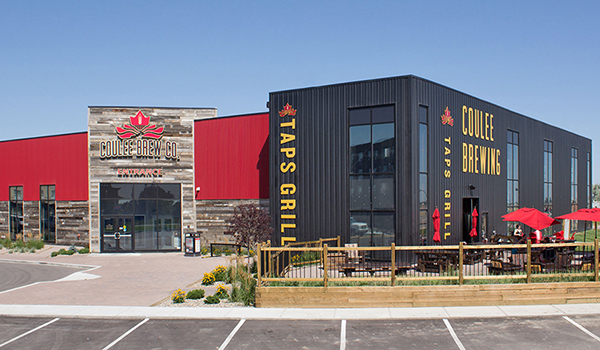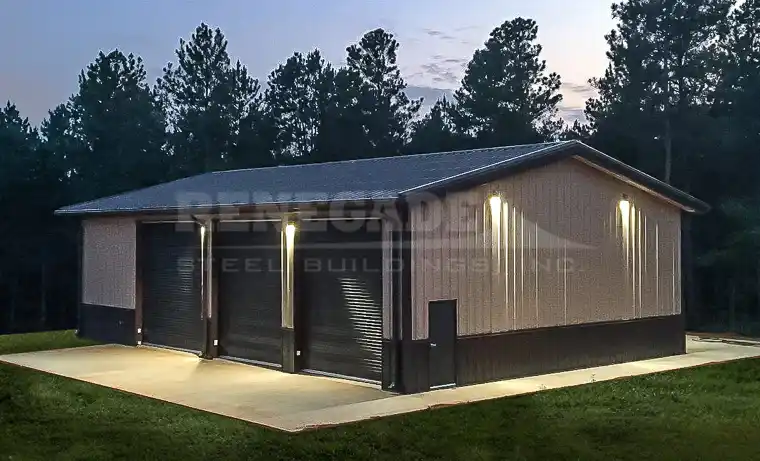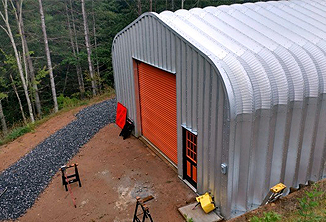Trusted Steel Buildings: Proven Solutions for Agricultural, Industrial, and Residential Requirements
Efficient Setup Practices for Steel Buildings: Enhancing Your Building Refine
From precise preparation to the usage of pre-engineered components, each action plays an important role in accelerating the construction timeline. By diving right into the realm of innovative installation strategies and guaranteeing rigorous high quality control measures, the capacity for maximizing the whole construction process ends up being not just a possibility yet a functional fact.
Preparation for Efficiency
When aiming to make the most of effectiveness in steel building setup, thorough preparation is important. Appropriate planning sets the foundation for a orderly and smooth building and construction process, ultimately saving time and resources.

Moreover, efficient interaction among all stakeholders is paramount throughout the preparation stage. Routine meetings and updates assist maintain everybody on the very same page, decrease misunderstandings, and cultivate a collective working setting - steel buildings. By investing time and initiative into careful planning, steel building installment can be performed with accuracy and effectiveness
Utilizing Pre-Engineered Parts
Reliable steel building setup techniques can be even more improved by leveraging the utilization of pre-engineered elements. Pre-engineered parts are created and manufactured off-site to accurate specs, ensuring compatibility and simplicity of setting up throughout the construction process. By integrating pre-engineered parts such as beam of lights, trusses, panels, and columns, building contractors can improve the setup procedure, minimize on-site labor needs, and minimize construction waste.
One key advantage of using pre-engineered components is the considerable time financial savings they supply. Since these components are fabricated in a controlled atmosphere, they come to the construction site prepared for effective and quick installation. This not only increases the overall building and construction timeline however additionally assists to lessen task hold-ups and linked prices.
In addition, pre-engineered parts are engineered for ideal performance and structural stability, making certain the long-lasting longevity and security of the steel building. By utilizing these standard elements, building contractors can achieve constant high quality across different jobs while additionally taking advantage of price savings connected with decreased material waste and labor expenditures.
Optimizing Construction Sequencing
To make best use of productivity and effectiveness in steel structure installation, tactical optimization of construction sequencing is paramount. By carefully intending the order in which jobs are executed, building groups can minimize downtime, decrease material handling, and streamline the general structure procedure.

Applying Advanced Setup Methods
Carrying out sophisticated installation methods boosts the efficiency and high quality of steel structure construction projects. By integrating sophisticated methods such as computer-aided layout (CAD) for precise planning, prefabrication of parts off-site, and usage of advanced machinery like robotic welders, building and construction groups can considerably enhance the setup process. CAD software permits comprehensive 3D modeling, aiding in the visualization of the last structure and making sure exact part measurements for a perfect fit during setting up. Prefabrication lowers on-site labor needs and building time by producing building aspects in a controlled environment, reducing mistakes and rework. Making use of robot welders enhances the rate and precision of welding tasks, improving the total structural integrity of the steel structure. Additionally, implementing innovative techniques advertises safety and security by minimizing hand-operated labor demands and prospective workplace threats. By welcoming technology in setup practices, construction tasks can be completed faster, with greater high quality results, and within budget restraints.
Making Certain Quality Assurance
Building upon the use of innovative installation strategies, maintaining rigid top quality control steps is vital in ensuring the structural stability and integrity of steel building jobs. Quality assurance starts with the option of top notch materials that meet market criteria and requirements. Regular evaluations throughout the building and construction procedure help identify any type of variances from the design or possible concerns that can compromise the building's stamina.
Paperwork is an important element of quality assurance, making certain that all actions in the installation process adhere to the authorized guidelines and strategies. This consists of recording assessments, product qualifications, and any kind of alterations made throughout building. Carrying out a clear interaction method amongst group members and subcontractors assists improve the quality control process and address any kind of problems without delay.

Final Thought
In conclusion, adopting efficient installation practices for steel buildings is essential for streamlining the construction process. It is essential to prioritize efficiency in order to take full advantage of efficiency and achieve successful outcomes in steel structure construction.
To make best use of performance and performance in steel building installation, strategic optimization of construction sequencing is extremely important. On the whole, by enhancing building sequencing, steel building setup can be finished extra effectively, conserving time and expenses in the process.
Carrying out sophisticated installation strategies improves the effectiveness and quality of steel structure construction projects. By focusing on quality control throughout the setup process, construction groups can provide steel buildings that are not just efficient yet reputable and also long lasting.
In conclusion, adopting efficient installation practices for steel structures is essential for improving the building process.